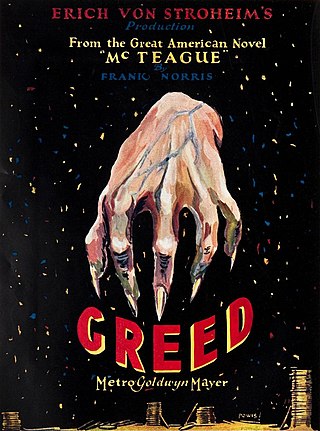
Greed is a 1924 American silent psychological drama film written and directed by Erich von Stroheim and based on the 1899 Frank Norris novel McTeague. It stars Gibson Gowland as Dr. John McTeague; ZaSu Pitts as Trina Sieppe, his wife; and Jean Hersholt as McTeague's friend and eventual enemy Marcus Schouler. The film tells the story of McTeague, a San Francisco dentist, who marries his best friend Schouler's girlfriend Trina.

Dwight Iliff Frye was an American character actor of stage and screen. He is best known for his portrayals of neurotic, murderous villains in several classic Universal horror films, such as Renfield in Dracula (1931) and Fritz in Frankenstein (1931).

Arsenic and Old Lace is a play by American playwright Joseph Kesselring, written in 1939. It has become best known through the 1944 film adaptation starring Cary Grant and directed by Frank Capra.

Lionel Alfred William Atwill was an English stage and screen actor. He began his acting career at the Garrick Theatre. After coming to the U.S., he subsequently appeared in various Broadway plays and Hollywood films. Some of his more significant roles were in Captain Blood (1935), Son of Frankenstein (1939) and To Be or Not to Be (1942).

Jean Brooks was an American film actress and singer who appeared in over thirty films. Though she never achieved major stardom in Hollywood, she had several prominent roles in the early 1940s as a contract player for RKO Radio Pictures.
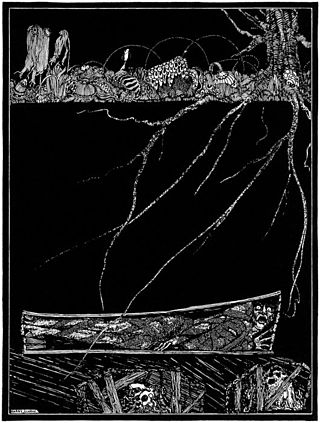
"The Premature Burial" is a horror short story by American writer Edgar Allan Poe, published in 1844 in The Philadelphia Dollar Newspaper. Its main character expresses concern about being buried alive. This fear was common in this period and Poe was taking advantage of the public interest. The story has been adapted to a film.
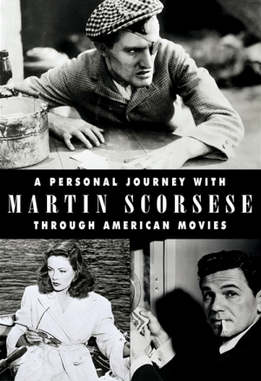
A Personal Journey with Martin Scorsese Through American Movies is a 1995 British documentary film of 225 minutes in length, presented by Martin Scorsese and produced by the British Film Institute.

The Student Prince in Old Heidelberg, also known as The Student Prince and Old Heidelberg, is a 1927 Metro-Goldwyn-Mayer silent drama film based on the 1901 play Old Heidelberg by Wilhelm Meyer-Förster. It was directed by Ernst Lubitsch, and stars Ramon Novarro and Norma Shearer.

The Great Gabbo is a 1929 American Pre-Code early sound musical drama film directed by James Cruze, based on Ben Hecht's 1928 short story "The Rival Dummy", and starring Erich von Stroheim and Betty Compson. The film features songs by Lynn Cowan, Paul Titsworth, Donald McNamee and King Zany.
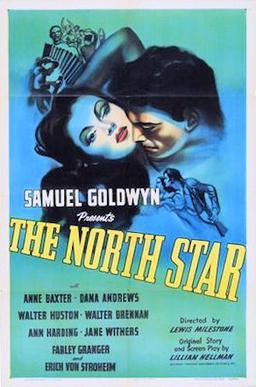
The North Star is a 1943 pro-resistance war film starring Anne Baxter, Dana Andrews, Walter Huston, Walter Brennan and Erich von Stroheim It was produced by Samuel Goldwyn Productions and distributed by RKO Radio Pictures. It was directed by Lewis Milestone, written by Lillian Hellman and featured production design by William Cameron Menzies. The music was written by Aaron Copland, the lyrics by Ira Gershwin, and the cinematography was by James Wong Howe. The film also marked the debut of Farley Granger.
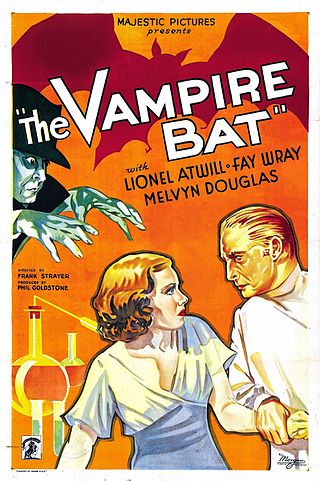
The Vampire Bat is a 1933 American Pre-Code horror film directed by Frank R. Strayer and starring Lionel Atwill, Fay Wray, Melvyn Douglas, and Dwight Frye.

Alraune, later renamed Unnatural: The Fruit of Evil, is a 1952 black and white West German science fiction film directed by Arthur Maria Rabenalt, based on the 1911 novel Alraune by German novelist Hanns Heinz Ewers, starring Hildegard Knef and Erich von Stroheim. The film involves a scientist who creates a woman (Knef) who is beautiful and yet soulless, lacking any sense of morality.

The Merry Widow is a 1925 American silent romantic drama/black comedy film directed and written by Erich von Stroheim. Released by Metro-Goldwyn-Mayer, the film stars Mae Murray, John Gilbert, Roy D'Arcy, and Tully Marshall, with pre-fame uncredited appearances by Joan Crawford and Clark Gable.

Foolish Wives is a 1922 American erotic silent drama film produced and distributed by Universal Pictures under their Super-Jewel banner and written and directed by Erich von Stroheim. The drama features von Stroheim, Rudolph Christians, Miss DuPont, Maude George, and others.

Rafaela Ottiano was an Italian-American stage and film actress.

Blind Husbands is a 1919 American drama film written and directed by Erich von Stroheim. The film is an adaptation of the story The Pinnacle by Stroheim.
Richard Day was a Canadian art director in the film industry. He won seven Academy Awards and was nominated for a further 13 in the category of Best Art Direction. He worked on 265 films between 1923 and 1970. He was born in Victoria, British Columbia, Canada and died in Hollywood, California.
Edmond T. Gréville was a French film director and screenwriter. He was married to the actress Vanda Gréville.

Under Secret Orders, also known as Mademoiselle Doctor, is a 1937 British spy film directed by Edmond T. Gréville and starring Erich von Stroheim, John Loder, Dita Parlo and Claire Luce. It is an English-language version of the French film Mademoiselle Docteur, also known as Salonique, nid d'espions, and released in the United States as Street of Shadows, which was filmed at the same time under the direction of G. W. Pabst. Both films have exactly the same plot, but there were differences in the cast between the two: in particular, von Stroheim was not in the French version.

Viola Mallory Lawrence is considered by many to be the first female film editor in Hollywood. She was nominated twice for the Academy Award for Best Film Editing: for Pal Joey (1957), with Jerome Thoms; and for Pepe (1960), with Al Clark.


















